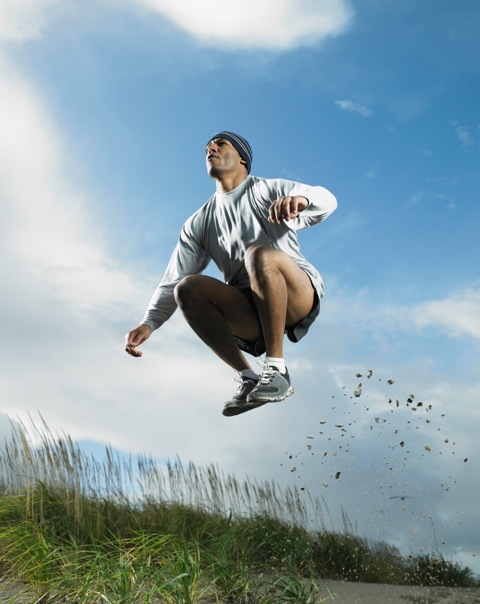Sports Medicine


Built for Squatting
Let’s look at squatting from a structural perspective. Are some people more suited to squatting than others based on bone structure, which can affect hip and knee joint angles? Also, what impact do the length of the muscles in the leg and the tendon insertion and origin points have on one’s ability to squat?
Squat Snapshot
• Lifters with short legs and torso length tend to be able to lift more weight.
• Lifters with relatively long muscles have greater potential for developing size and strength.
• Muscle strength is influenced by a lower point of tendon insertion.
• Muscle strength is heavily influenced by muscle fibre type and neurological training development.

Limb Length
Squatters with short limbs, specifically the femur (thigh), tend to be able to lift more weight because they exhibit a better mechanical advantage. The less distance you need to go down to break parallel, the better. The squat technique that also creates this effect is a wide stance, especially if you’re using a squat suit. Most basketball players can’t and shouldn’t do full squats because of their very long femur bones, which cause them to bend over excessively during the movement.
Muscle Length and Tendon Insertion Point
Differences in squat strength may come about because of variation in muscle length. People with longer quadriceps muscles that insert closer to the knee are usually stronger then people with short quads that insert further away from the knee. Also, high insertion points can potentially cause excessive myotendinous junction stress (the point where the muscle and tendon combine) and may result in a higher incidence of injury. If you have shorter quad muscles, a wider stance that puts more stress on the glutes and hips will be helpful to increase your strength.
Muscle Fibre Type and Neurological Strength Development
Limb, muscle length, and tendon insertion points are all genetic. They cannot be altered. Muscle fibre and neurological development are partially genetic and can be altered with training. Heavier weight and lower reps tend to train the Type IIb fibres that are most responsible for muscle strength. They also train the nervous system to fire all the muscle fibres maximally at the same time to build that explosive power.

Squat Style Tips
For strength, load the hips first by driving your glutes backwards and then bend at the knees. This motion increases glute and hamstring involvement. Keep the knees over the feet and the shin bone as perpendicular as possible to decrease the amount of motion you need to reach parallel.
Body Type Squat Stance
If your body type is:
• Short torso: use a medium to wide squat stance.
• Long torso: use a medium squat stance.
• Long femurs and a long torso: use a close to medium squat stance.
• Short femurs and a short or long torso: use a close, medium, or wide squat stance; experiment with what stance feels comfortable.
• If you’re trying to be as strong as possible and using a squat suit, a wider stance is best as the suit supports the hips and you have less distance to travel to reach parallel.
Squat Biomechanics-David Sandler-SWIS Video-Vol.1-Clip 1
https://www.youtube.com/watch?v=Xke98Ktn36s
Squat Kinetic Analysis-David Sandler-SWIS Video-Vol.1-Clip 2
https://www.youtube.com/watch?v=_wMuz_DLFHs
For more information about squatting and it's importance, click here!

